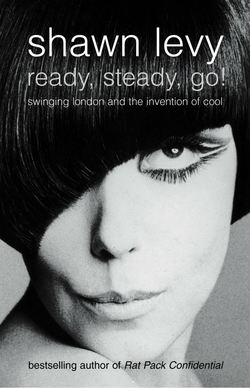Читать книгу Ready, Steady, Go!: Swinging London and the Invention of Cool - Shawn Levy - Страница 11
A Bit of Yankophilia
ОглавлениеTalent was everywhere, spilling out of taxis, the streets teemed with it. You could bump one day into a random genius on a street corner and get a hand in launching a 40-year career: serendipity.
Take itchy Andrew Loog Oldham, who had talked his way into jobs at the city’s hottest boutique, nightclub and artist-management firm at the audacious age of nineteen. In ‘63, his latest adventure – embarked upon, as had been the others, with a characteristic melange of moxie, palaver and vim – was managing a rhythm and blues band that he was sure would rise above the sea of Beat Boom hopefuls who’d welled up in the wake of the Beatles’ stunning success. Enamoured of the flash style of American record producer and famed weirdo Phil Spector, Oldham, neither musically nor technologically literate, had anointed himself the band’s producer, but, bottom line, the band’s live sound—the frenetic, pulsing stuff on which they made their name – had eluded him at first go, resulting in a tinny, limp single that had failed to crack the Top 20. (As another survivor of his studio ministrations, Small Faces keyboardist Ian McLagen, would one day declare, This guy is not an engineer. He’s an idiot. He has no idea about sound. He couldn’t produce a burp after a glass of beer.’)
One September afternoon, Oldham was fretting in a West End basement jazz club as his band rehearsed: nothing in their current repertoire felt like the next single; the Beat Boom was happening without them. Discouraged, he decided to take a walk and come at things fresh. Out on Charing Cross Road, he struck gold: emerging from a taxi were John Lennon and Paul McCartney, dressed for success, slightly tipsy, just after being fêeted at a Variety Club luncheon at the Savoy where the Beatles had been named Top Vocal Group of the Year.
Oldham knew them. He’d worked a few months earlier that year as a pavement-pounding press agent for Brian Epstein, who felt that EMI wasn’t doing enough to promote the band. When John and Paul caught sight of Oldham’s moue and asked what was wrong, he explained his dilemma: he needed a hit tune—did they have any to spare; ha-ha-ha? Lennon and McCartney knew and liked Oldham’s band and—hey presto! – volunteered to help. They themselves were to resume recording their second album the very next day and had a song that they’d be willing to share – it just needed a little polishing – wouldn’t take a minute.
So Oldham returned to the dingy confines of the Studio 51 jazz club with England’s hottest songwriting team in tow. Handshakes all round, and then John and Paul taught the band parts of the song they’d already finished and worked out the incomplete passages in front of the startled onlookers – a two-man hit-making machine, even with a few pints in them, at the drop of a hat.
The next day, Lennon and McCartney recorded the song with their own group, giving the vocal part to Ringo, who sang jokily, nervily, a mark, perhaps, of how lightly the Beatles regarded the tune in the grand scheme of things. But the version by the other guys, recorded a month after that fateful afternoon encounter, turned into a no. 12 hit—‘I Wanna Be Your Man’, the first breakthrough record for the Rolling Stones.
